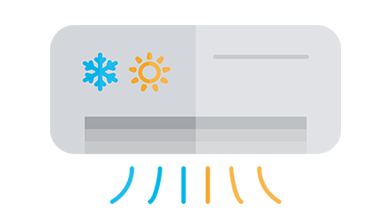Solar thermal collectors for hot water
Heating water accounts for a significant portion of your electricity consumption. Have you ever considered installing a solar thermal collector to heat your water?
By using solar energy, this device reduces energy consumption of the electric water heater by 20% to 40%, depending on the technology used, where the system is located and how it’s used.
The system, which can be installed on the roof of your home or shed or placed on the ground, includes the following:
-
A solar collector, i.e., a tube that contains a heat-transfer fluid, which is a liquid used to extract heat before sending it to a location where it will be used (e.g., glycol)
-
A network of pipes that connects the solar collector to the home’s water heater
-
A pump used to circulate the heat-transfer fluid
-
A secondary tank
You could receive financial assistance for the purchase and installation of a solar thermal collector for hot water with the LogisVert Efficient Homes Program.
How it works
To understand how the system works, imagine a garden hose left out in the sun on a hot summer day. When the water stored in the hose is released, it’s warm because it was heated by the sun. The system works according to the same principle.
Stages of the operating cycle of a solar thermal collector for hot water

- A pump sends the heat-transfer fluid to the solar thermal collector.
- The heat-transfer fluid circulates in the solar thermal collector’s pipes where it absorbs the heat from the sun.
- The thermal heat exchanger system enables the heat-transfer fluid to transfer its heat to the water in the storage tank.
- The storage tank supplies the water heater with preheated water, minimizing electricity consumption.
- The traditional water heater then serves as a backup system. It heats the water if necessary until it reaches the temperature at which its thermostat is set.
Precautions to maximize the performance of the thermal collector system
-
Before equipping your home with a solar collector system, make sure it complies with all municipal regulations.
-
Choose the site of the solar collectors carefully—make sure they’re in a sunny location so they can recover as much energy as possible.
-
After a big snowfall, remove any snow from the solar collectors.
Choosing the most appropriate type of solar thermal collector
Each type has advantages and drawbacks. The following information will help you decide.
| Deciding factor | Vacuum tube collectors | Flat-plate collectors |
|---|---|---|
| Amount of energy recovered | A little less | A little more |
| Energy retention | Better | A little more energy loss |
| Season | Appropriate in all seasons | Ideal for recovering summer heat E.g., to heat a pool |
Reference: Solar thermal collectors for hot water (In French
only)![]()



